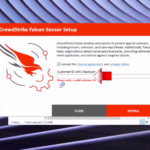In the world of insurance, effective risk assessment and management are critical components that contribute to the success and sustainability of an insurance company. Proper risk evaluation and mitigation strategies ensure that insurers can accurately price their products, maintain financial stability, and deliver on their promises to policyholders. This comprehensive guide will explore the intricate process of assessing and managing insurance risks, providing valuable insights and practical strategies for industry professionals.
Assessing Insurance Risks:
Risk Identification and Assessment
Identifying Potential Risks
- Conduct thorough research and analysis to identify potential risks that could impact an insurance company’s operations.
- Analyze historical data, industry trends, emerging technologies, and socio-economic factors that may influence risk exposure.
- Consider both internal and external factors that could contribute to risk, such as operational inefficiencies, regulatory changes, natural disasters, and economic fluctuations.
Quantifying and Prioritizing Risks
- Develop a comprehensive risk assessment framework that assigns numerical values or ratings to identified risks based on their likelihood and potential impact.
- Prioritize risks based on their severity and probability, allowing insurers to focus their resources on the most critical areas.
- Utilize advanced data analytics, statistical modeling, and scenario analysis to accurately quantify risks and optimize decision-making processes.
Establishing Risk Appetite and Tolerance
Defining an Appropriate Risk Appetite
- Insurers must establish a clear and well-defined risk appetite that aligns with their overall business strategy and objectives.
- The risk appetite should consider factors such as the company’s financial strength, competitive position, regulatory environment, and stakeholder expectations.
- It should strike a balance between taking on appropriate levels of risk to generate returns and maintaining a prudent approach to risk management.
Setting Risk Tolerance Levels
- Based on the defined risk appetite, insurers should establish specific risk tolerance levels for various risk categories, such as underwriting, investment, operational, and strategic risks.
- Risk tolerance levels should be quantifiable and measurable, allowing for continuous monitoring and adjustment as necessary.
- Regular reviews and updates to risk tolerance levels are essential to ensure they remain aligned with the company’s evolving risk profile and strategic objectives.
Managing Insurance Risks:
Implementing Effective Risk Mitigation Strategies
Diversification and Risk Transfer
- Diversify insurance portfolios across different lines of business, geographical regions, and customer segments to reduce concentration risk.
- Explore risk-sharing arrangements, such as reinsurance, to transfer portions of risk to third parties and mitigate potential losses.
- Implement robust underwriting practices, including risk-based pricing, thorough due diligence, and stringent policy terms and conditions.
Risk Control and Monitoring
- Develop and enforce strict internal controls, policies, and procedures to manage operational risks and ensure compliance with regulatory requirements.
- Implement robust risk monitoring systems that track key risk indicators, enable early detection of potential issues, and facilitate timely corrective actions.
- Regularly review and update risk management strategies to adapt to changing market conditions, industry trends, and regulatory landscapes.
Fostering a Risk-Aware Culture
Effective Communication and Training
- Promote open communication and transparency throughout the organization, encouraging employees at all levels to actively participate in risk management discussions.
- Provide comprehensive training programs that educate employees on risk identification, assessment, and mitigation techniques, fostering a culture of risk awareness.
- Establish clear lines of communication and reporting structures to facilitate the timely escalation of risk-related concerns and ensure prompt decision-making.
Incentive Alignment and Accountability
- Align incentive structures and performance metrics with the company’s risk management objectives, encouraging responsible risk-taking behaviors.
- Establish clear roles, responsibilities, and accountability for risk management across different levels of the organization, from the board of directors to frontline employees.
- Regularly review and update incentive structures to ensure they continue to support the desired risk management culture and practices.
Table: Risk Assessment and Management Framework
| Risk Assessment | Risk Management |
|---|---|
| Identify potential risks | Diversify insurance portfolios |
| Quantify and prioritize risks | Implement risk transfer strategies (e.g., reinsurance) |
| Define risk appetite and tolerance levels | Enforce risk controls and monitoring systems |
| Conduct thorough research and analysis | Foster a risk-aware culture through communication and training |
| Utilize data analytics and statistical modeling | Align incentives and establish clear accountability |
| Consider internal and external factors | Regularly review and update risk management strategies |
- Effective risk assessment involves identifying potential risks, quantifying their likelihood and impact, and prioritizing them based on severity and probability.
- Insurers should establish a well-defined risk appetite that aligns with their business strategy and objectives, along with specific risk tolerance levels for various risk categories.
- Risk mitigation strategies include diversification, risk transfer through reinsurance, robust underwriting practices, and strict internal controls and monitoring systems.
- Fostering a risk-aware culture through open communication, comprehensive training, aligned incentives, and clear accountability is crucial for successful risk management.
- Regularly reviewing and updating risk management strategies, in line with changing market conditions and regulatory landscapes, is essential for maintaining resilience and adaptability.
FAQs:
What is risk assessment in insurance?
Risk assessment in insurance involves identifying, analyzing, and evaluating potential risks that could impact an insurance company’s operations, financial stability, and ability to meet its obligations to policyholders.
Why is risk assessment important in insurance?
Effective risk assessment is crucial for insurance companies because it allows them to accurately price their products, maintain financial solvency, and make informed decisions about the types and levels of risks they are willing to assume.
What are some common risks faced by insurance companies?
Some common risks faced by insurance companies include underwriting risk (e.g., incorrect pricing or selection of risks), investment risk (fluctuations in asset values and interest rates), operational risk (inefficiencies, fraud, or system failures), and strategic risk (changes in the competitive landscape or regulatory environment).
How can insurance companies quantify risks?
Insurance companies can quantify risks by assigning numerical values or ratings based on the likelihood and potential impact of each identified risk. They can utilize data analytics, statistical modeling, and scenario analysis to estimate the probability and severity of potential losses.
What is risk appetite in insurance? Risk appetite is the level of risk an insurance company is willing to accept in pursuit of its business objectives. It defines the boundaries within which the company operates and guides its decision-making process regarding risk-taking.
What are risk mitigation strategies in insurance?
Risk mitigation strategies in insurance include diversification (spreading risks across different lines of business, geographical regions, and customer segments), risk transfer (using reinsurance to share or transfer portions of risk), robust underwriting practices, strict internal controls, and continuous risk monitoring and adjustment.
How can insurance companies foster a risk-aware culture?
Insurance companies can foster a risk-aware culture through open communication and transparency, comprehensive training programs, aligned incentive structures, clear roles and responsibilities, and regular reviews and updates to risk management practices.
Why is it important to regularly review and update risk management strategies?
It is essential to regularly review and update risk management strategies to adapt to changing market conditions, industry trends, regulatory landscapes, and the company’s evolving risk profile. This helps maintain resilience and ensures that risk management practices remain effective and aligned with the company’s strategic objectives.
Conclusion:
Effective risk assessment and management are vital components of a successful and sustainable insurance business. By following a comprehensive framework that involves identifying potential risks, quantifying their impact, establishing appropriate risk appetite and tolerance levels, implementing robust mitigation strategies, and fostering a risk-aware culture, insurers can navigate the complexities of the industry with confidence. Regularly reviewing and updating risk management practices in line with changing market conditions and regulatory landscapes is crucial for maintaining resilience and adaptability. By embracing a proactive and thorough approach to risk assessment and management, insurance companies can protect their financial stability, deliver on their promises to policyholders, and achieve long-term success in a dynamic and competitive market.










